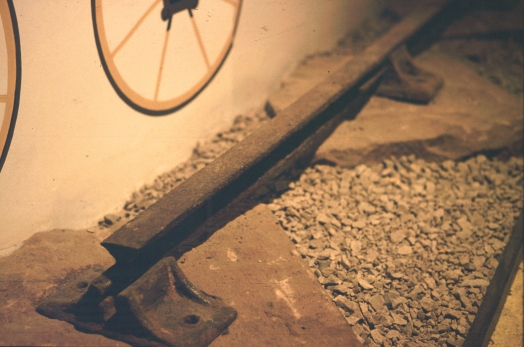Fish belly rail
Resource Type: Image | Posted on 28th October 2011 by Liam Physick
One of the images donated to Metal by Eric Shenton. Fish belly rails, so called from their shape, were the earliest cast-iron rails in general use on railways. The very earliest rails were wooden, but these were replaced in the 1760s by strap-iron rails, in which thin strips of cast iron were fixed onto the wooden rails. Though cheap to construct, they were very fragile and soon maintenance costs proved too great, and they were replaced by flanged (L-shaped) cast-iron rails, running under flat wheels, though it was eventually realised that flanged wheels worked better on this sort of rail, and they remain the type of wheels used in rolling stock today. However, cast-iron rails were brittle and easily broken, so they could only be made in short, uneven lengths. They were replaced from the 1820s by wrought-iron rails, which contributed heavily to the expansion of railways in the first half of the nineteenth century: steel rails were first used in 1857
Categorised under: The Station & Railway Pioneers

Comments